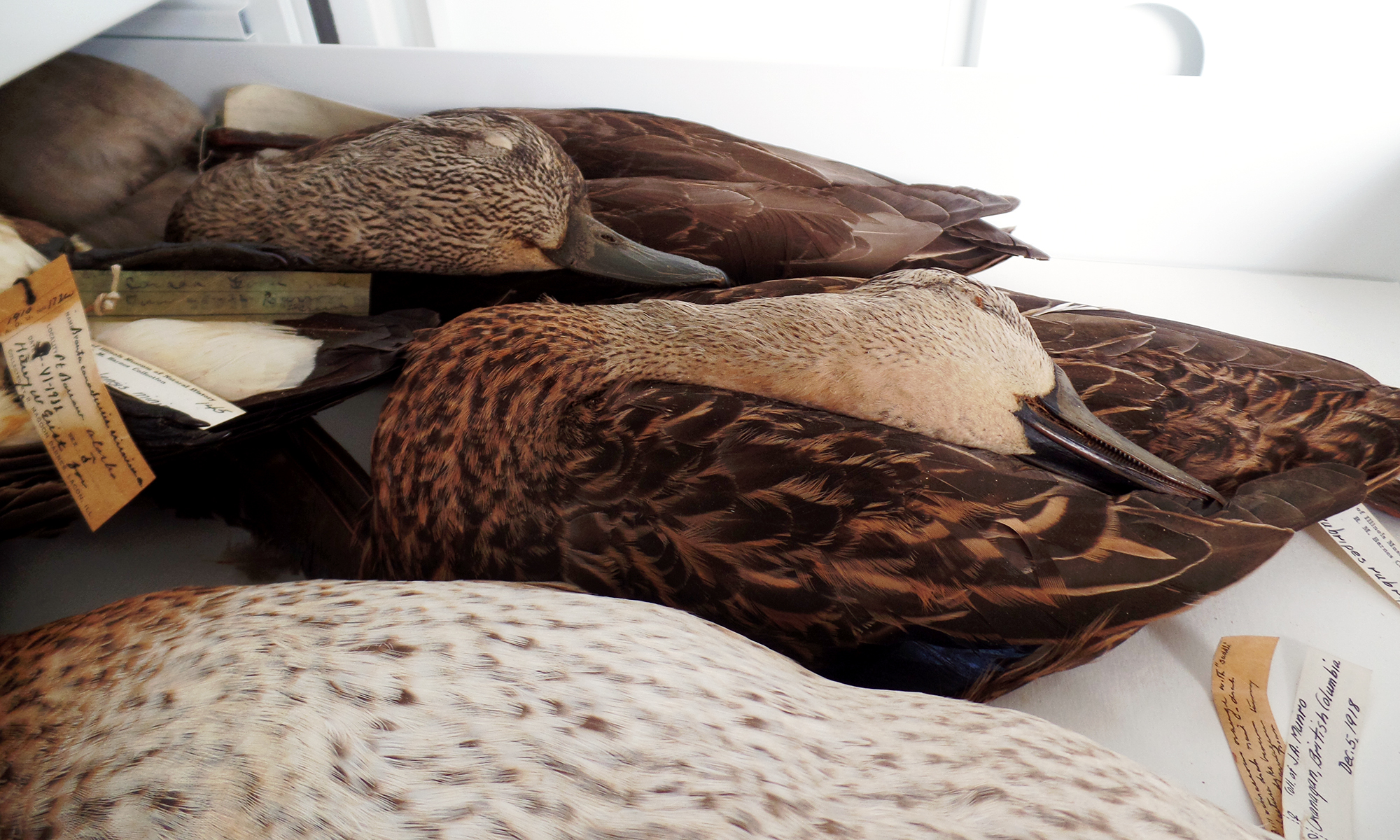The INHS Bird Collection consists of over 3,000 specimens of over 200 species. Much of the INHS collection dates from the 1950s through the 1970s and is almost exclusively from Illinois. Although relatively small, the collection includes such rare species as Sprague’s Pipit (Anthus spragueii) and a very large sample (over 200 individuals) of the Gray-cheeked Thrush (Catharus minimus), a common migrant. Many of the specimens were dead when collected at the bases of television towers statewide, documenting comparative mortality of birds at these structures.
The collection also includes an impressive egg collection gathered between the late 1880s and early 1930s, donated to INHS by Arthur Blocher. This collection consists of hundreds of egg sets representing hundreds of species collected not only in Illinois but from throughout the United States, and includes many species not found in Illinois. There is a modest nest collection as well.
The University of Illinois collection, which INHS now manages, complements the INHS collection. There are many excellent specimens of species collected outside this country, including representatives from such diverse groups as penguins (Spheniscidae), woodcreepers (Dendrocolaptidae), hoatzin (Opisthocomidae), and even kiwis (Apterygidae).

